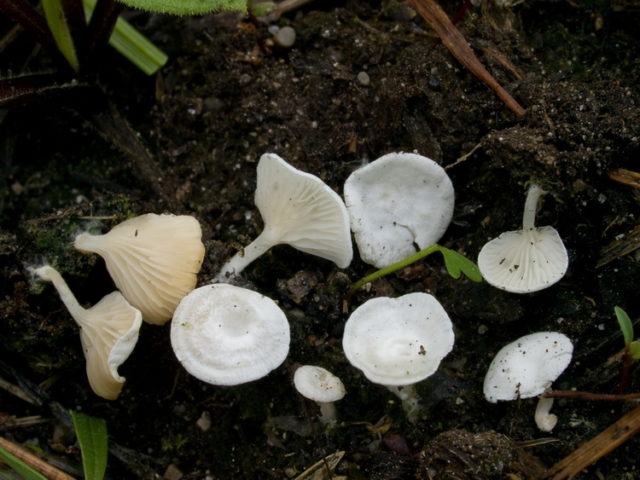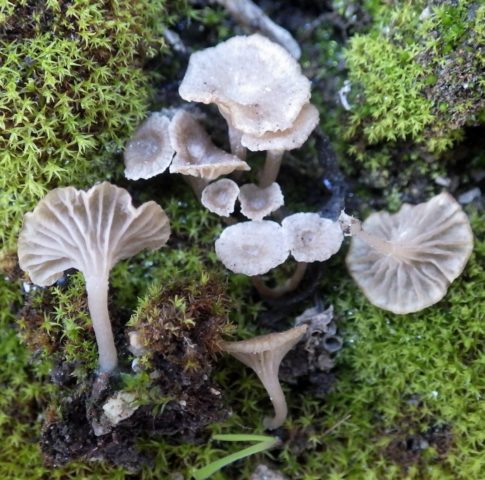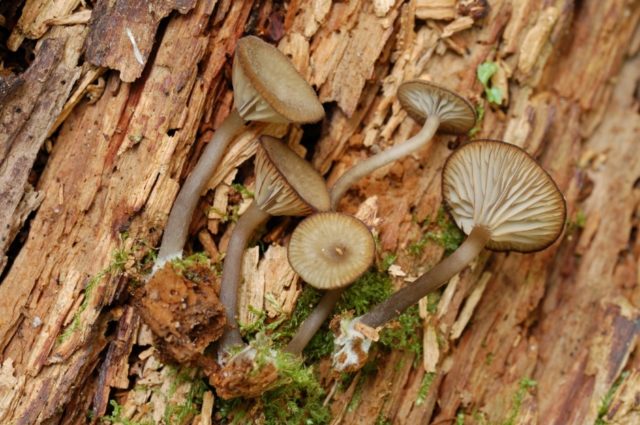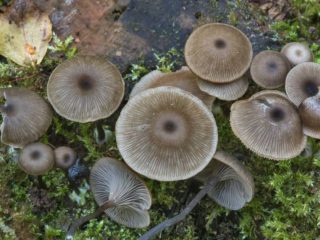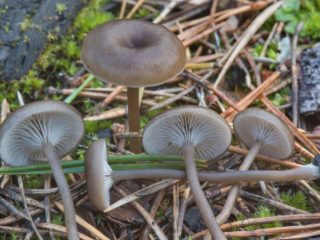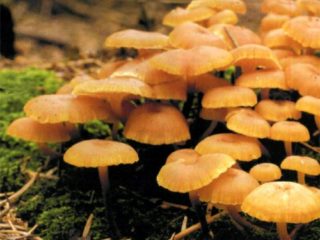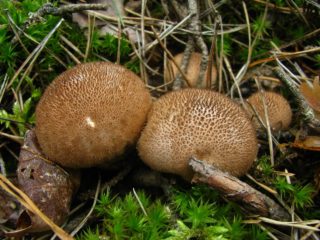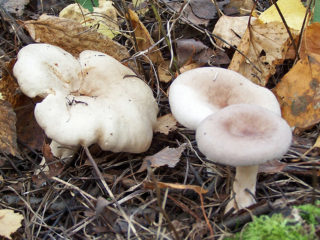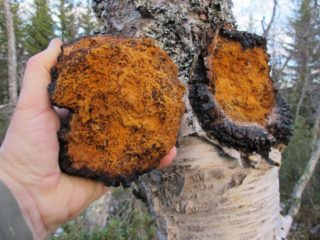Content
Omphalina crippled belongs to the Ryadovkov family. The Latin name for this species is omphalina mutila. It is an inedible, rather rare guest in Russian forests.
Description of omphaline mutilated
The fruiting bodies of the described specimen are small, consisting of a whitish cap and a pronounced leg. The pulp is light, fresh in taste with barely perceptible bitterness.
Description of the hat
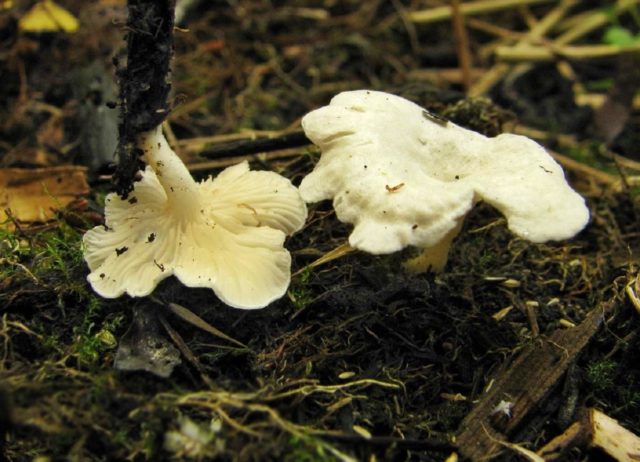
When dry, the surface of the cap fades, becomes faded
At a young age, the cap of the omphaline mutilated is almost flat; as it grows, it becomes funnel-shaped, with an unevenly bent edge. Its size for the entire period reaches no more than 4 cm in diameter. The surface is slightly dull, clean, painted in a whitish tone. On the underside there are very rare fork-shaped plates.
Leg description
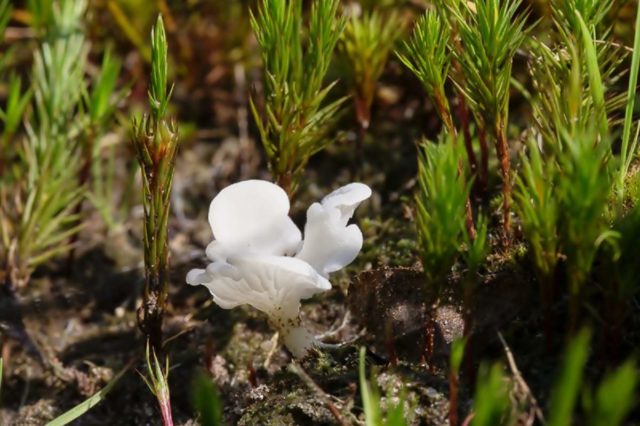
The pulp does not have a pronounced odor
The stem can be central or eccentric, pale cream, beige or cream in color. Quite short, no more than 2 cm in length. The surface is smooth, but in some specimens, flaking scales can be seen.
Where and how it grows
For the growth of omphaline, the crippled chooses sandy soil or peat bogs, it can also grow among plants such as heather or rush. The optimal time for development is the period from July to September. In Russia, this specimen is rather rare, but it was recorded in the central regions, as well as in the North Caucasus. This variety is most common in European countries, especially those close to the Atlantic. In most cases, it grows in groups.
Is the mushroom edible or not
Like many varieties of the genus omphaline, it belongs to the group of inedible mushrooms. It is likely that it is not edible due to the small size of the fruiting bodies and the bitter taste. However, according to most reference books, the status of this species has not yet been officially determined.
Doubles and their differences
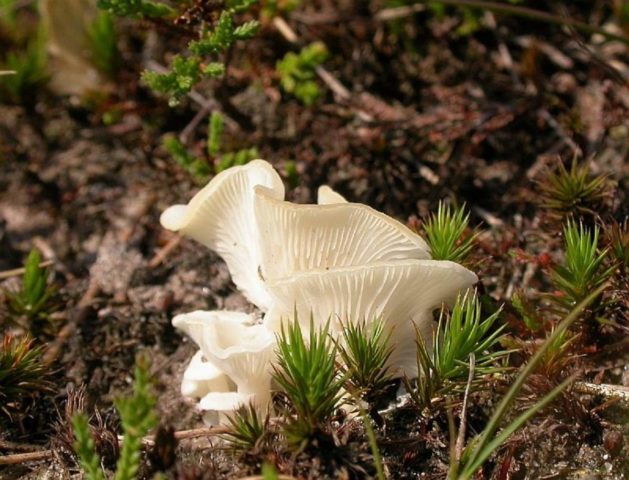
Spore powder is white
Similar types of omphaline mutilated include the following mushrooms:
- Omphalina cinder - a distinctive feature is the dark brown color of the cap with an olive tint; in old mushrooms it becomes silvery gray. The leg of the twin is black, and it grows mainly in fires.
- Omphalina goblet - is considered an inedible gift of the forest. Her hat is convex-funnel-shaped, up to 3 cm in diameter. You can distinguish a double by the darker shades of the fruit bodies. So, the hat is striped, brown, and the leg is gray-brown with a whitish fluff at the base.
Conclusion
Omphalina mutilated is not a particularly well-known and popular specimen among numerous representatives of the Ryadovkov family. In Russia, it is quite rare, but still sometimes appears in its central part, as well as in the North Caucasus.
